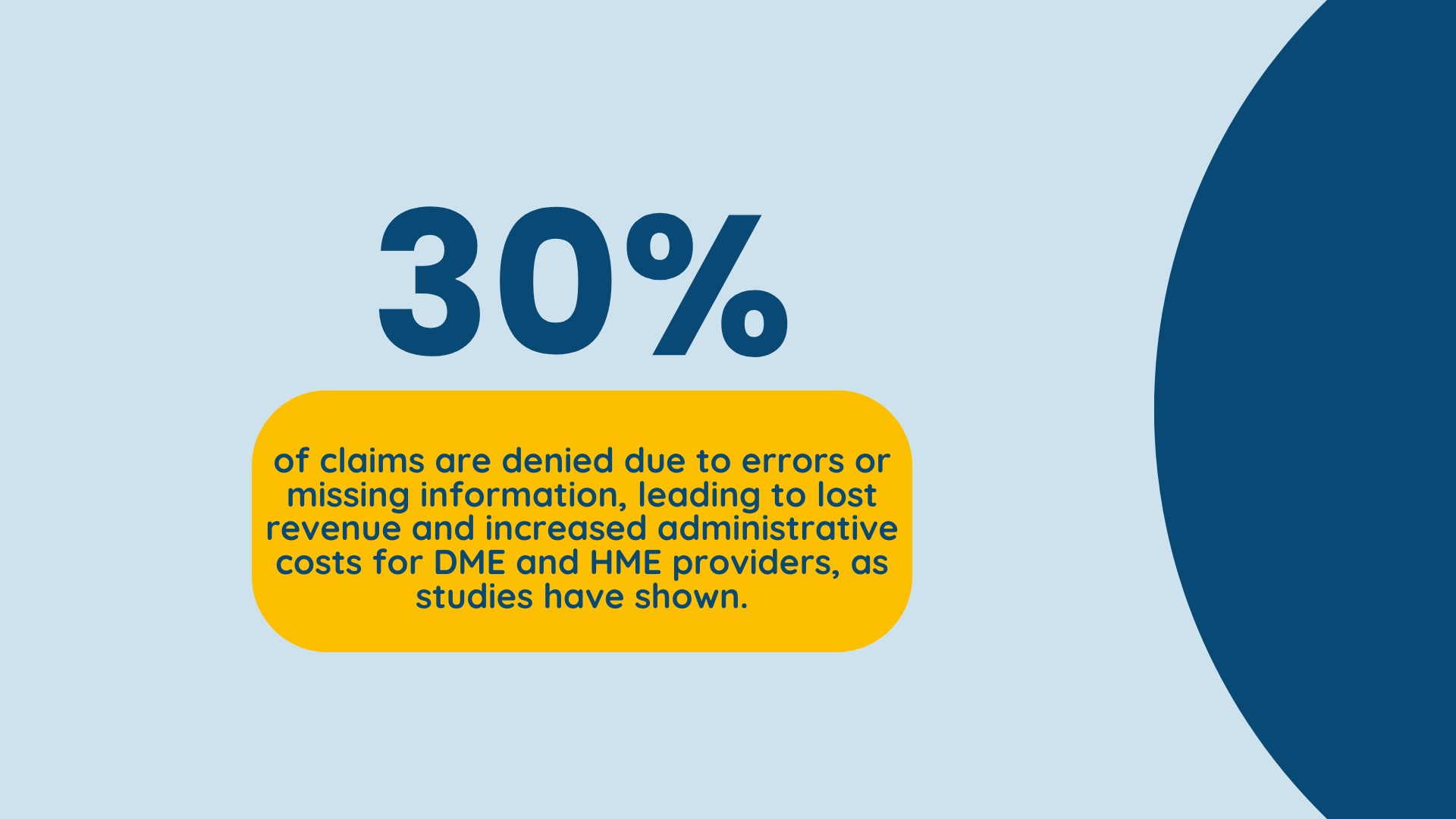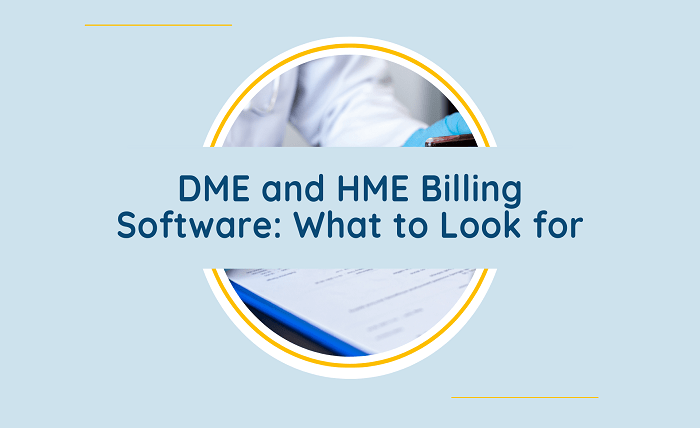In the ever-evolving healthcare landscape, Durable Medical Equipment and Home Medical Equipment providers face numerous challenges. One of the most significant hurdles is efficient and accurate billing. Managing complex insurance regulations, handling claims, and minimizing denials can prove to be a laborious and exasperating endeavor. This is where the best DME billing software comes in as a savior.
The Need for DME and HME Billing Software
The DME and HME industry is booming, with the market expected to reach a staggering $41.4 billion by 2025. The growth surge is driven by an aging demographic, an increase in chronic illnesses, and advancements in medical equipment technology. Nevertheless, this expansion brings with it the challenge of overseeing intricate billing procedures.
Manual billing is error-prone, inefficient, and can lead to significant revenue losses. Studies have shown that up to 30% of claims are denied due to errors or missing information. This translates to lost revenue and increased administrative costs for DME and HME providers.
DME and HME billing software can streamline these processes, improve accuracy, and boost revenue. By automating tasks, such as claims submission, eligibility verification, and denial management, the software can save time and money for providers.
What to Look for in DME and HME Billing Software
Given the multitude of available DME and HME billing software choices, the task of selecting the most suitable one can become quite daunting. Here are some key features to look for:
- Integrated Revenue Cycle Management (RCM)
A comprehensive DME and HME billing software should offer integrated RCM functionalities. This includes features like:
- Patient demographics and insurance management
- Order processing and inventory tracking
- Claims scrubbing and editing
- Electronic claims submission (ECS)
- Payment posting and reconciliation
- Denial management and appeals
- Compliance and Regulatory Support
The DME and HME industry is heavily regulated. The software you choose should help you stay compliant with all applicable federal, state, and payer-specific regulations. This includes features like:
- Medicare Fraud and Abuse (Stark) Law compliance
- HIPAA compliance
- ICD-10 coding support
- Payer-specific billing rules and requirements
- Automation and Reporting
Emphasizing automation is pivotal in streamlining your billing procedures and minimizing errors. Seek software that can automate tasks including:
- Claims scrubbing and editing
- Prior authorization requests
- Patient statement generation and mailing
- Denial management workflows
Furthermore, robust reporting capabilities are indispensable for monitoring your financial performance and pinpointing areas in need of enhancement. The software should provide detailed reports on key metrics such as:
- Claims submitted and paid
- Denial rates
- Collection rates
- Revenue by payer
- Inventory levels

- User-friendliness and Ease of Use
The software should be user-friendly and easy to learn, even for non-technical users. Look for a system with an intuitive interface and comprehensive training resources.
- Scalability and Integration
As your business grows, your DME and HME billing software should be able to scale with you. Select a system that can cater to both your present and future requirements. Moreover, ensure that the software seamlessly integrates with your other healthcare software systems, including Electronic Health Records (EHRs) and Point-of-Sale (POS) systems.
- Cost and Support
Don’t get bogged down by price tags alone! While DME and HME billing software costs can vary significantly (from hundreds per month to thousands per year), prioritize your specific needs and choose a system that offers the features and support you truly require. Ask vendors about their training programs, support policies, and any potential implementation fees to ensure a smooth transition.
Benefits of Using DME and HME Billing Software
Investing in DME and HME billing software can provide numerous benefits for your business, including:
- Increased revenue by reducing claim denials and improving collection rates
- Reduced administrative costs by automating tasks and streamlining workflows
- Improved accuracy by eliminating human errors
- Enhanced compliance by ensuring adherence to regulations
- Better patient satisfaction by providing faster and more efficient service
In summary, DME and HME software is a vital tool for healthcare providers, especially in the growing industry. It streamlines billing processes, reduces errors, and ensures compliance with regulations. When choosing the right software, consider integrated revenue cycle management, compliance features, automation, user-friendliness, scalability, and cost-effectiveness. The benefits include increased revenue, reduced administrative costs, improved accuracy, compliance, and enhanced patient satisfaction, making it an essential investment for providers aiming to thrive in the healthcare landscape.



